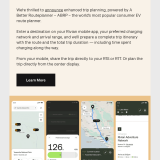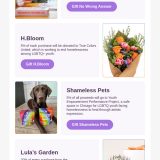Email marketing remains a crucial tool for web designers looking to expand their client base and maintain strong relationships with existing customers. Its versatility and high ROI make it an ideal strategy for engaging audiences and showcasing new projects or updates. This guide specifically tailors email marketing strategies for web designers, providing key insights and answering common questions to enhance your campaigns.
The Role of Email Marketing in Web Design
Email marketing for web designers is not just about sending out promotions—it’s a platform for sharing your portfolio, announcing new services, and providing valuable insights into the design process that can help clients understand the value you bring.

Crafting Your Email Marketing Strategy
Step 1: Define Your Goals
Clear objectives are crucial for successful email plan campaigns. As a web designer, your goals might include:
- Showcasing recent projects to inspire potential clients.
- Promoting special offers on your design services.
- Sharing insights and tips on website maintenance and design trends.
- Re-engaging past clients with updates or new offerings.
Step 2: Segment Your Audience
Understanding who you’re communicating with helps tailor your messages for better engagement. Consider segmenting your audience by:
- Industry type—different sectors have different design needs.
- Project type—customizing emails based on whether clients need full-site designs, refreshes, or specific features like e-commerce.
- Engagement level—tailor content based on how frequently contacts engage with your emails.
Step 3: Build and Maintain Your Email List
An effective email list is crucial to your marketing efforts. Grow your list through:
- A signup form on your portfolio website.
- Encouraging signups during client meetings or at the end of projects.
- Offering a free downloadable resource, like a design checklist or an e-book on the latest web design trends.
Ensure compliance with privacy regulations like GDPR by getting clear consent to send emails.
Step 4: Choose the Right Tools
The right tools can make or break your email marketing. Platforms like Mailchimp or Campaign Monitor offer features that suit web designers, such as customizable templates that showcase your design skills and detailed analytics to track the effectiveness of your campaigns.
Step 5: Create Engaging Content
As a web designer, your emails should visually engage your audience. Include:
- Images of your latest projects.
- Case studies that detail the project process and results.
- Tips on improving website usability and aesthetics.
- Announcements of free webinars or design workshops you’re hosting.
Step 6: Test and Refine
Utilize A/B testing to explore different email components, from subject lines to visual layouts. Monitor key metrics like open rates and click-through rates to continually refine your strategy and ensure your content resonates with your audience.

Step 7: Automate and Personalize
Email automation tools enable you to send triggered emails based on specific actions, like downloading a resource or viewing certain content on your site. Personalization, beyond just using the recipient’s name, can include tailoring content based on the client’s past projects or expressed interests.
Email Marketing FAQs for Web Designers
Q1: How often should I send emails to my clients and prospects? A1: Balance is key. Consider bi-weekly or monthly emails to keep your audience engaged without overwhelming them. Adjust based on engagement levels and feedback.
Q2: What are some effective email subject lines for web designers? A2: Subject lines that highlight immediate value, such as “Boost your site’s performance with these tips,” or showcase something new, like “New portfolio pieces added,” tend to perform well.
Q3: How do I measure the effectiveness of my email campaigns? A3: Focus on metrics that matter to web designers, such as click-through rates on portfolio links, downloads of resources, and direct inquiries about your services.
Q4: How can I ensure my emails are mobile-friendly? A4: Use responsive design in your emails, test them on various devices, and keep your layout and content concise to enhance readability on smaller screens.
Q5: Can I use email marketing to improve client retention? A5: Absolutely. Regular updates about your services or sharing valuable resources can keep your clients engaged and remind them of your expertise and relevance.
This tailored approach not only helps in reaching potential clients but also serves as a tool for educating and engaging existing clients, showcasing the breadth and depth of your web design capabilities. With thoughtful planning and strategic execution, email marketing can be a powerful component of your overall marketing strategy as a web designer.






